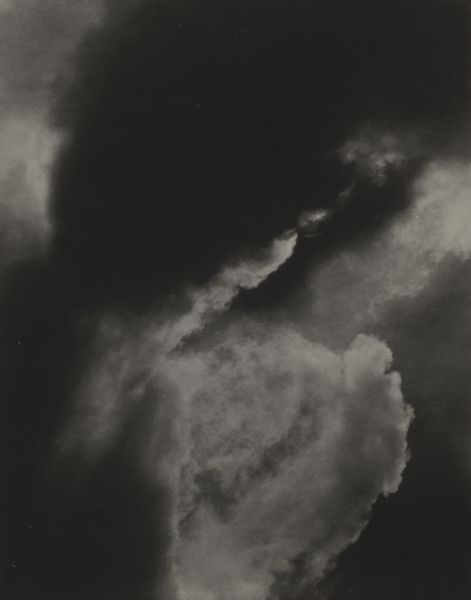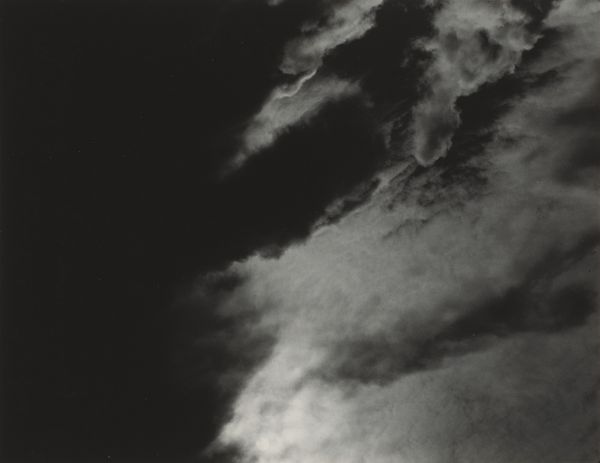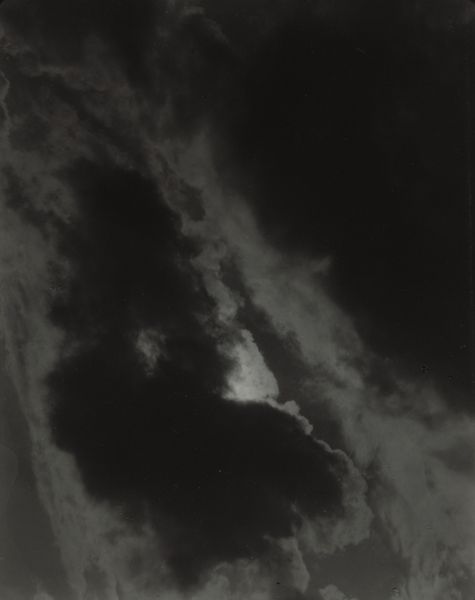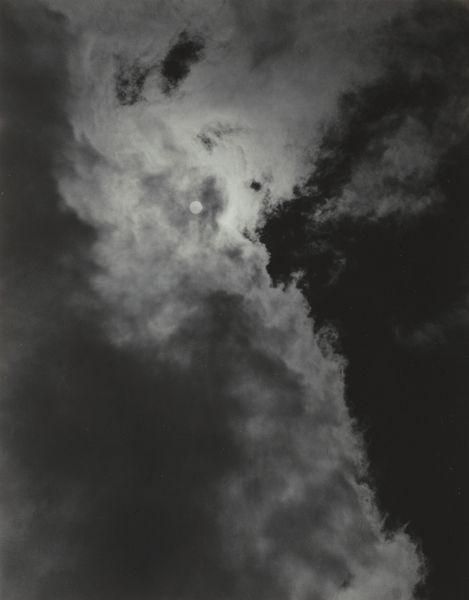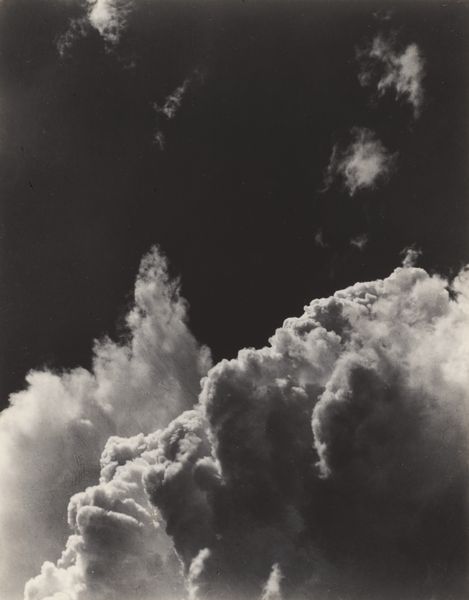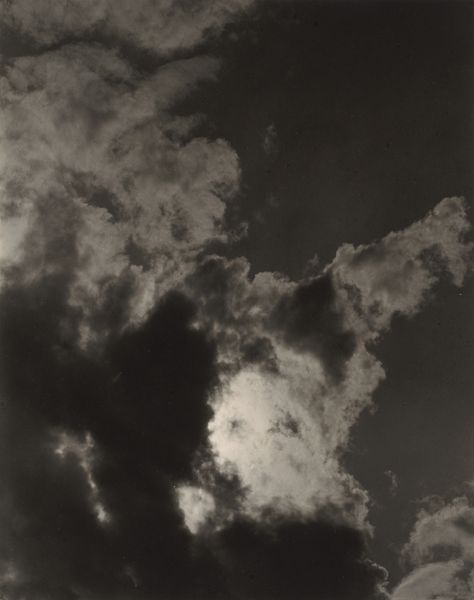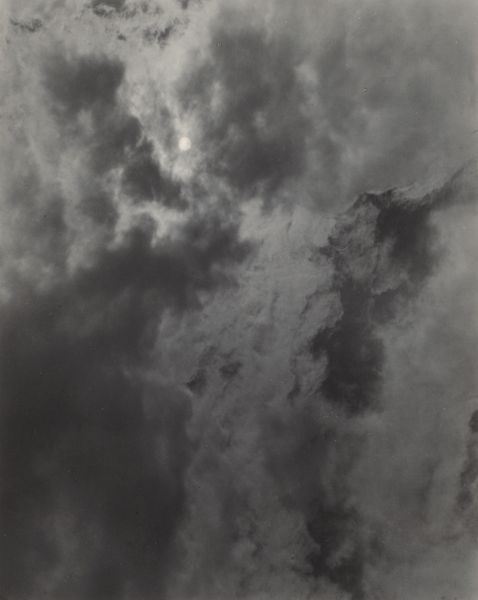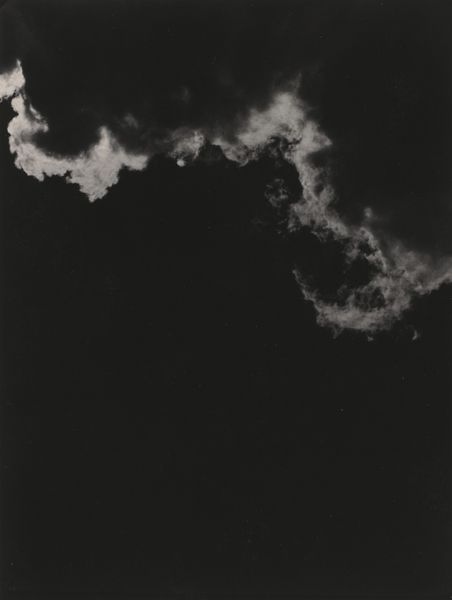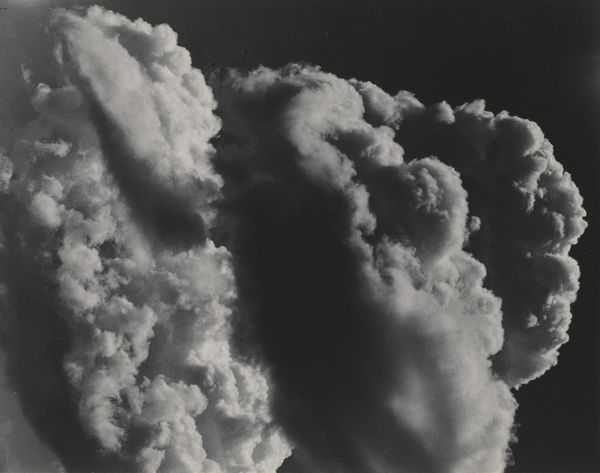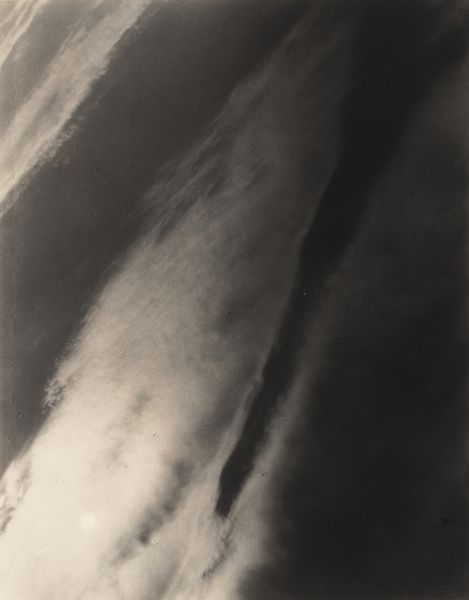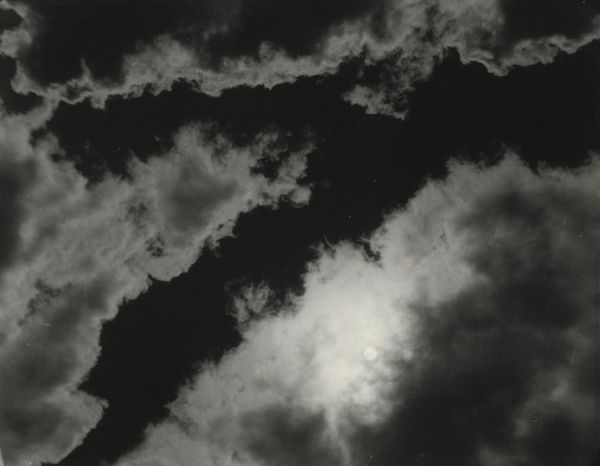
Dimensions: sheet (trimmed to image): 11.9 x 9.2 cm (4 11/16 x 3 5/8 in.) mount: 34.3 x 27.6 cm (13 1/2 x 10 7/8 in.)
Copyright: National Gallery of Art: CC0 1.0
Curator: This is Alfred Stieglitz's "Songs of the Sky P1", a gelatin silver print made in 1923. Editor: The immediate impression is striking – a study in contrasts, dark against light, ephemeral shapes dominating the frame. It almost feels like a nocturne rendered in cloud. Curator: Stieglitz's "Songs of the Sky", part of his "Equivalents" series, goes beyond merely representing clouds. He aimed to capture inner emotions and spiritual states through these atmospheric studies. Clouds, historically, have symbolized transition and change, reflecting human experiences. Editor: Absolutely, it's fascinating how Stieglitz transforms the concrete reality of clouds into abstract forms, relying on the inherent qualities of photography – tone, texture, and composition. The strong diagonal sweep creates a dynamic tension. We move from sharp delineation of cloud edges to softer, almost painterly areas. Curator: Stieglitz was deeply influenced by Symbolism; these images become vehicles for personal and universal experiences. His photographs resonate with cultural memory, echoing themes of transcendence and the sublime, seen across centuries of art. Editor: The dark backdrop intensifies the luminosity of the clouds, directing the eye along the sinuous forms. The very composition implies movement, growth – not unlike a musical score. I would suggest that its monochromatic palette allows viewers to better appreciate these nuanced values and subtle modulations in gray. Curator: He titled them “equivalents” for that precise reason: an emotional mirroring. The photographs function less as objective records and more as reflections of the artist's interior landscape— and our own. Editor: So, in contemplating Stieglitz's “Songs of the Sky," one must ask if the abstract has rendered the concrete – if those fluffy cumulonimbus forms and stratus banners offer insights to both artist and the viewer. The semiotic density is palpable, each gradation speaking more in this subtle, nuanced way. Curator: I agree completely. It's through these ostensibly simple forms that Stieglitz gives us insight into much broader ideas regarding spirituality, identity, and our place within the world around us. The series serves as a testament to the symbolic potential of visual forms. Editor: It’s a compelling interplay of form and feeling, encouraging a sustained observation, if only to decipher, however ephemerally, this atmospheric composition.
Comments
No comments
Be the first to comment and join the conversation on the ultimate creative platform.
